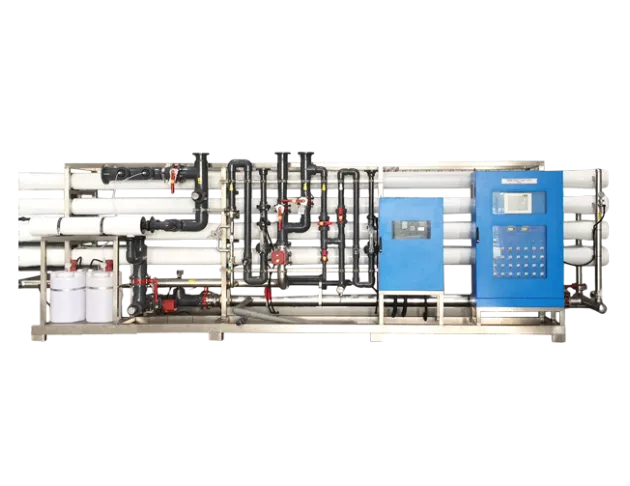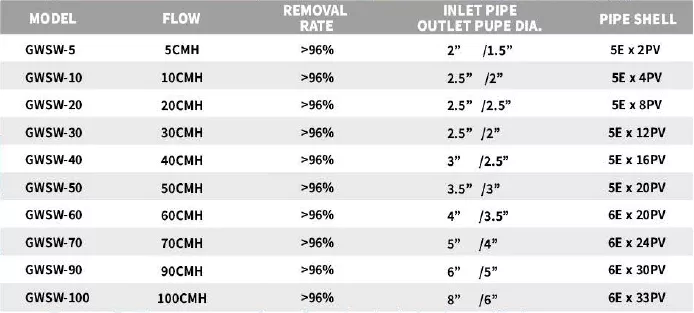
1 /
1
SW Sea Water Desalination System
Description:
Industrial engineering、Agricultural irrigation、Aquaculture、Aedical water supply、Domestic water supply、Demiconductor manufacturing、Pharmaceuticals, and other industrial sectors
-
Desalination, also known as seawater desalination, refers to a water treatment technique that uses energy to separate saltwater into two parts: one part containing extremely low levels of fresh water, and the other part containing highly saline brine, thereby achieving desalination.
The primary methods of desalination are distillation and reverse osmosis.
Desalinated water is mainly used for agricultural irrigation and providing drinking water. For some water-scarce countries, it can also increase the total amount of fresh water available, unaffected by time, space, or climate. The water quality is good. To date, more than 130 countries and regions worldwide have adopted seawater or brackish water desalination technologies to obtain fresh water.
-
Reverse Osmosis (RO): Utilizing the principle of osmotic pressure, seawater is pressurized through high-pressure pumps to generate pressure greater than the osmotic pressure, allowing freshwater to permeate through a membrane and thereby reverse osmosis occurs, while concentrated brine is discharged from the other end.
The reverse osmosis process flow includes: seawater → pretreatment system → high-pressure water pump → reverse osmosis membrane assembly → energy-saving recovery device → purified water. Depending on the raw water quality and desired output, pretreatment systems may include coarse filtration, activated carbon adsorption, and fine filtration. Fine filtration is essential to protect the reverse osmosis membrane and extend its lifespan. Additionally, since composite membranes are highly sensitive to free chlorine in water, pretreatment systems usually incorporate activated carbon adsorption.

Seawater Desalination Energy-Saving System

-

-
System IntroductionDesalination, also known as seawater desalination, refers to a water treatment technique that uses energy to separate saltwater into two parts: one part containing extremely low levels of fresh water, and the other part containing highly saline brine, thereby achieving desalination.
The primary methods of desalination are distillation and reverse osmosis.
Desalinated water is mainly used for agricultural irrigation and providing drinking water. For some water-scarce countries, it can also increase the total amount of fresh water available, unaffected by time, space, or climate. The water quality is good. To date, more than 130 countries and regions worldwide have adopted seawater or brackish water desalination technologies to obtain fresh water.
-
Process FlowReverse Osmosis (RO): Utilizing the principle of osmotic pressure, seawater is pressurized through high-pressure pumps to generate pressure greater than the osmotic pressure, allowing freshwater to permeate through a membrane and thereby reverse osmosis occurs, while concentrated brine is discharged from the other end.
The reverse osmosis process flow includes: seawater → pretreatment system → high-pressure water pump → reverse osmosis membrane assembly → energy-saving recovery device → purified water. Depending on the raw water quality and desired output, pretreatment systems may include coarse filtration, activated carbon adsorption, and fine filtration. Fine filtration is essential to protect the reverse osmosis membrane and extend its lifespan. Additionally, since composite membranes are highly sensitive to free chlorine in water, pretreatment systems usually incorporate activated carbon adsorption.

Seawater Desalination Energy-Saving System

-
Specification Sheet


